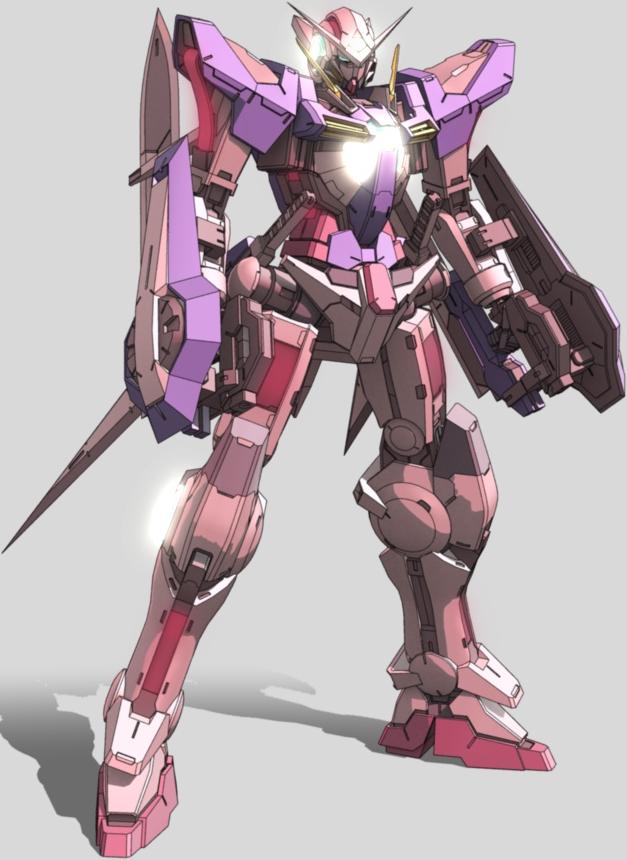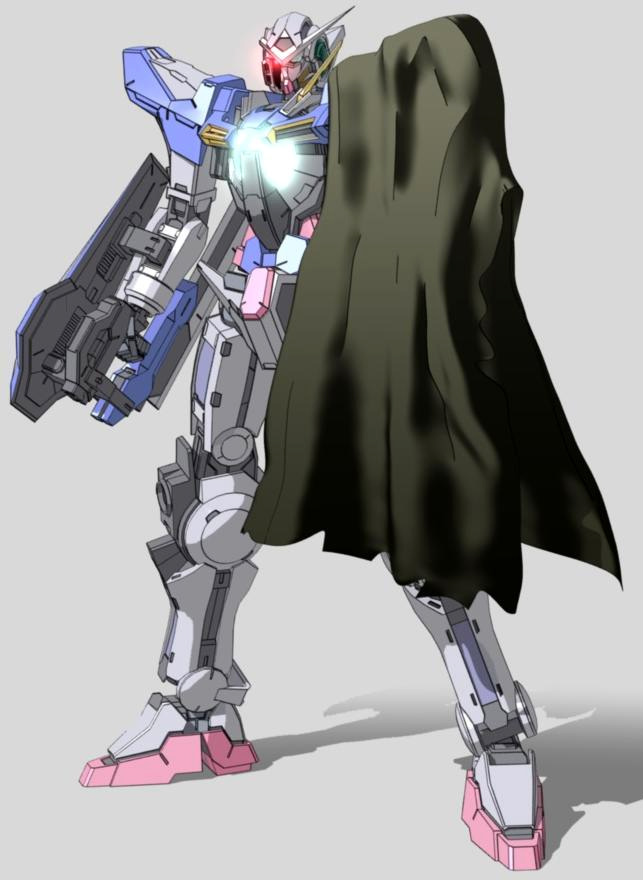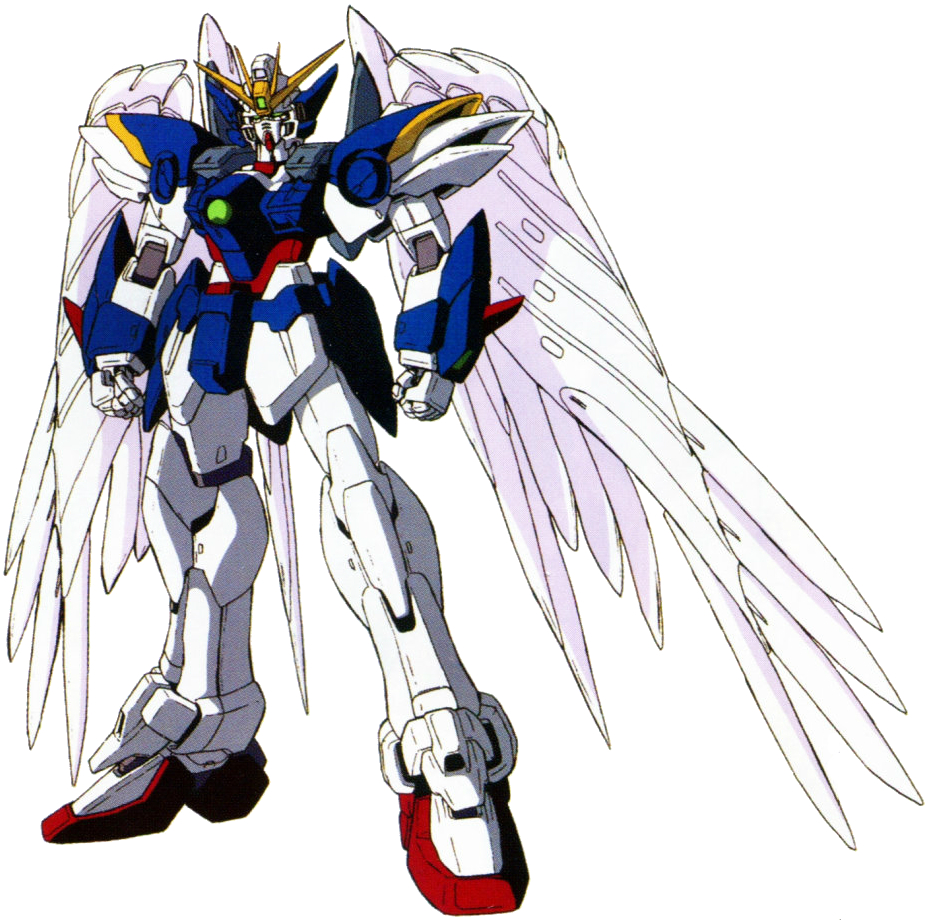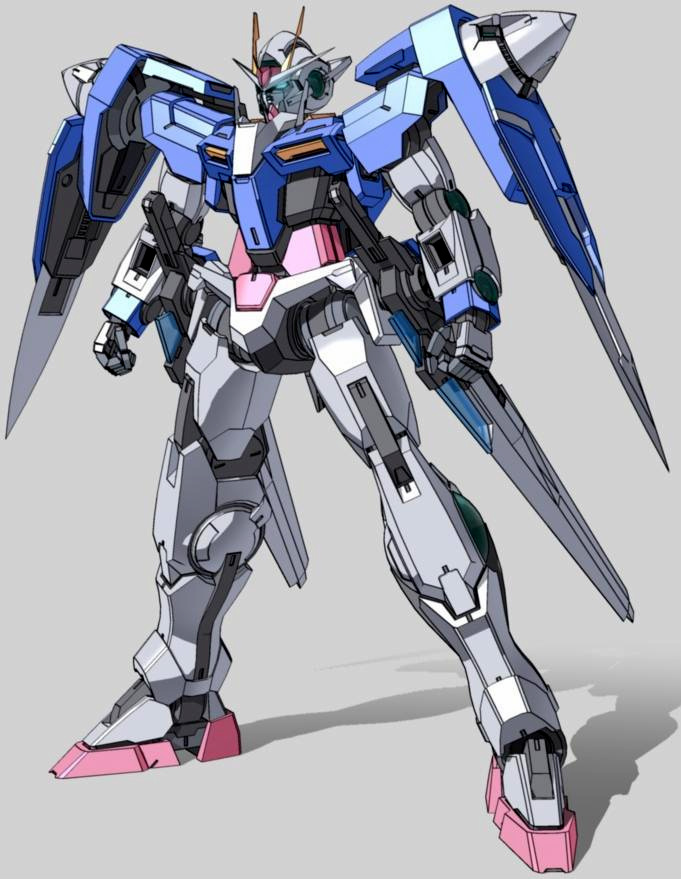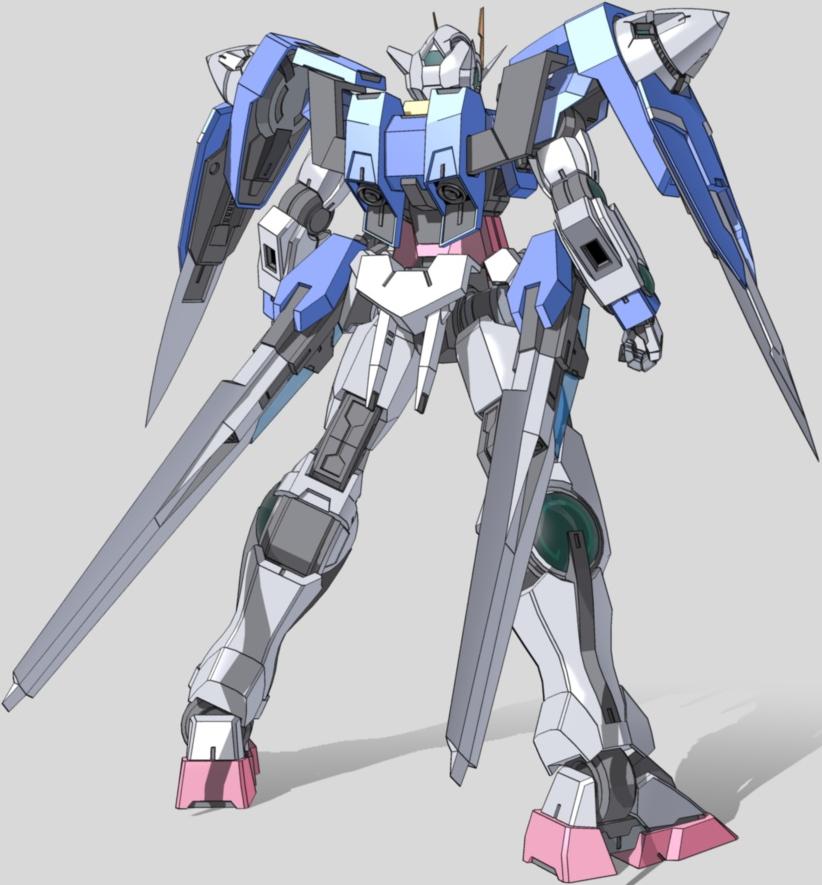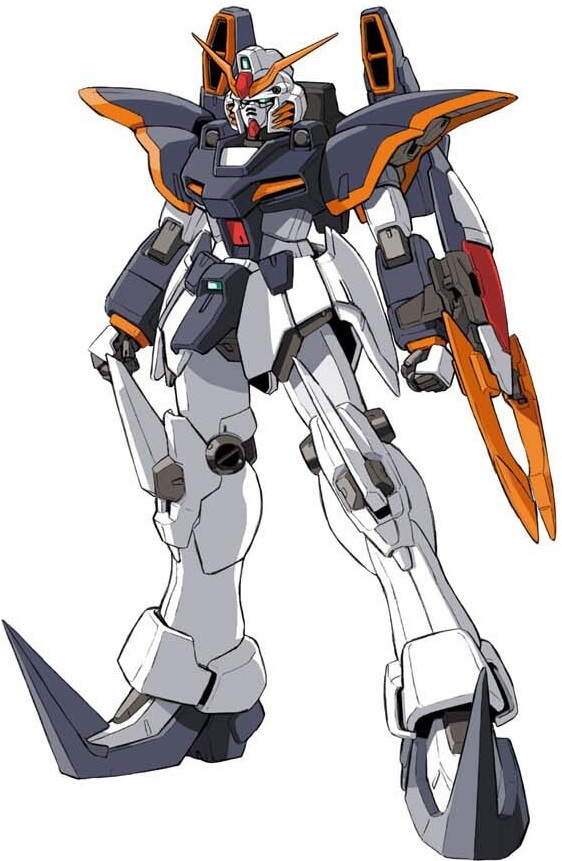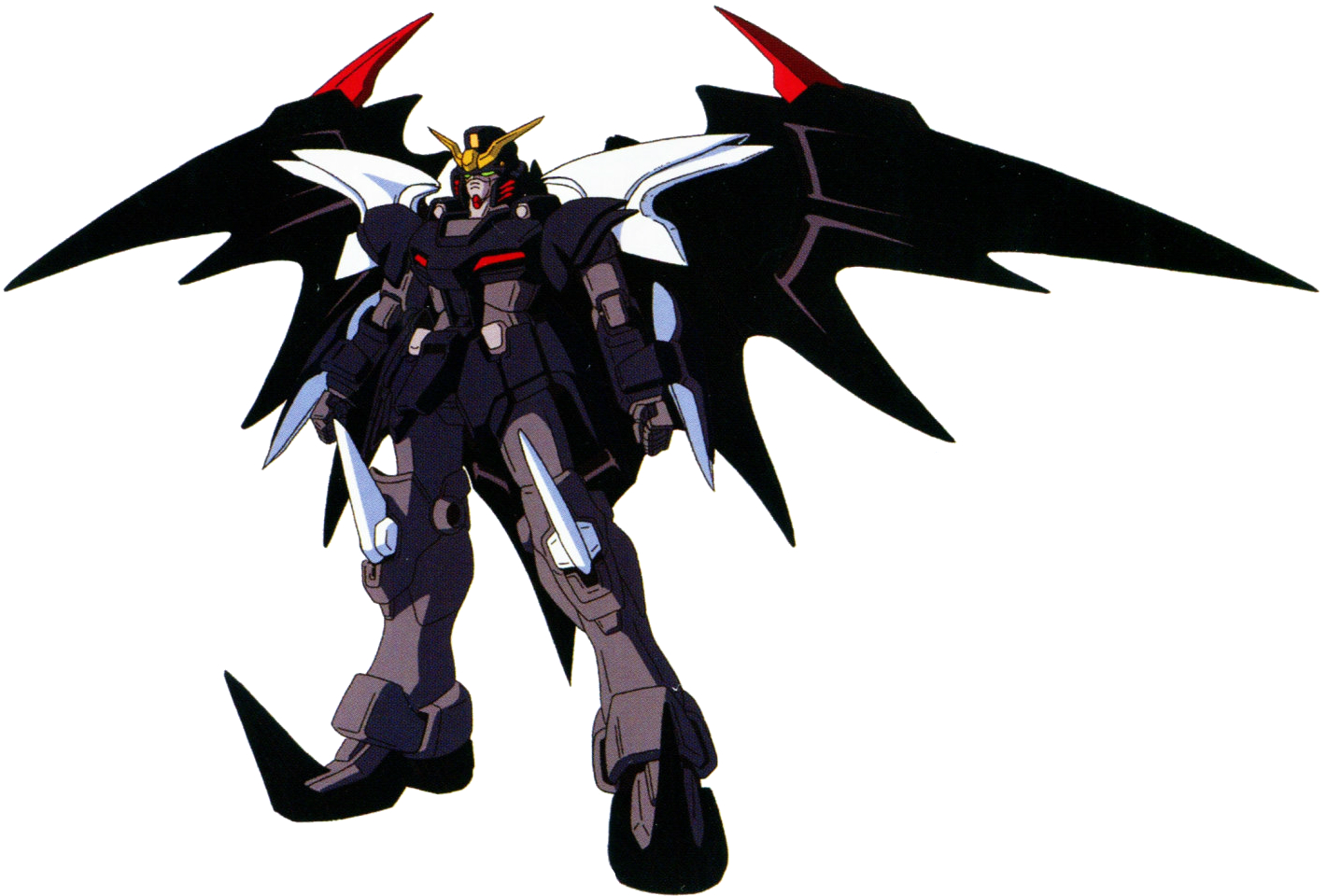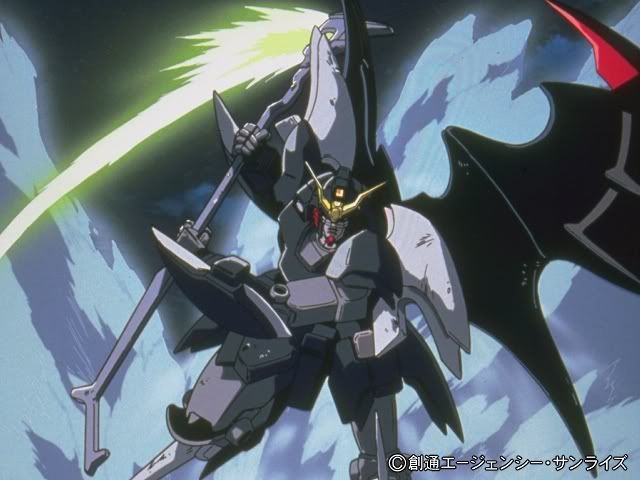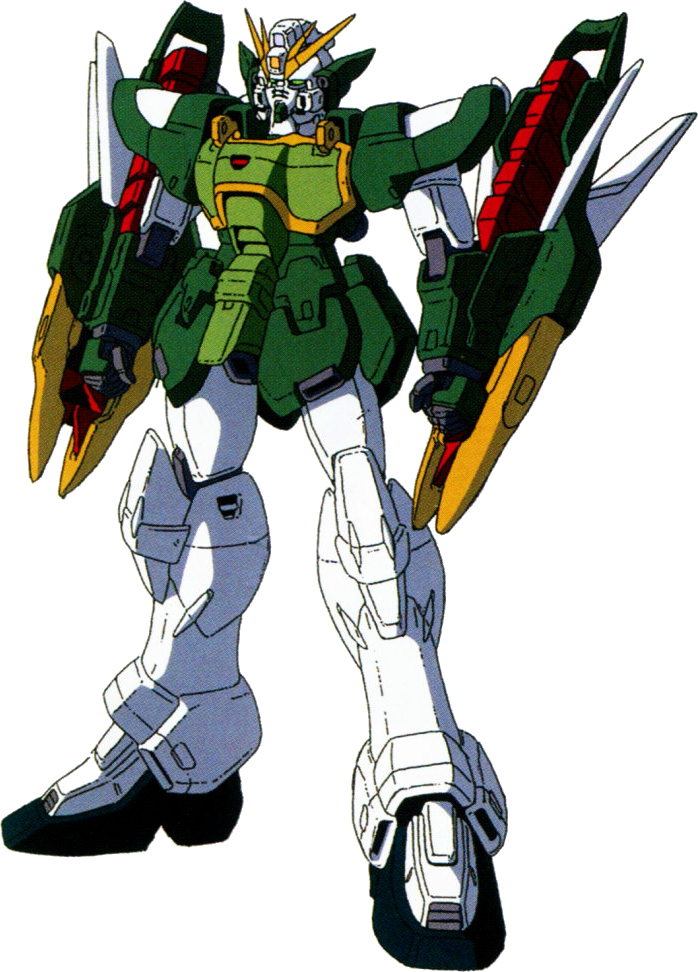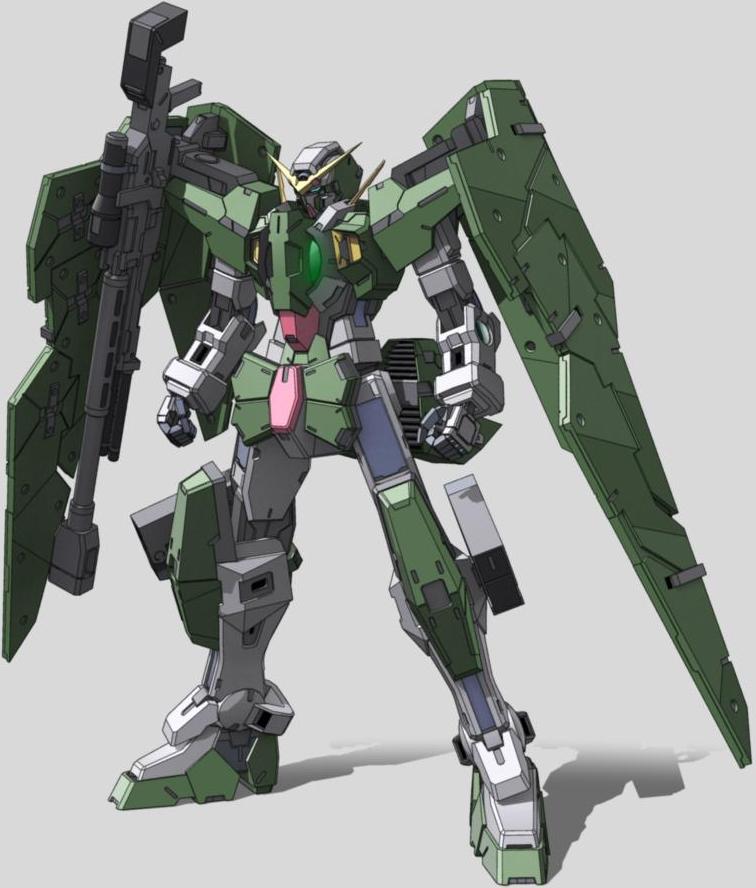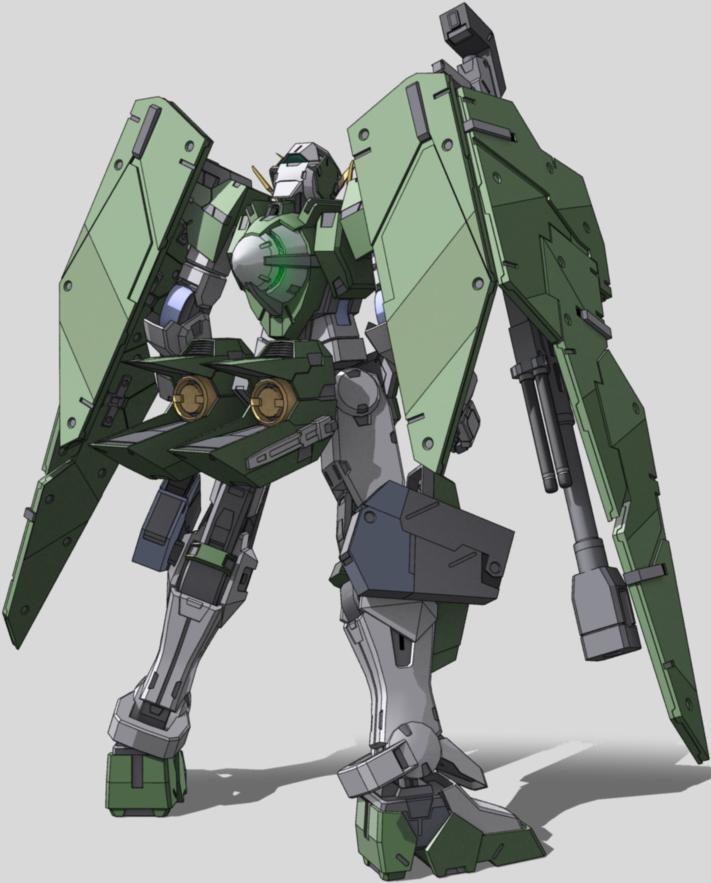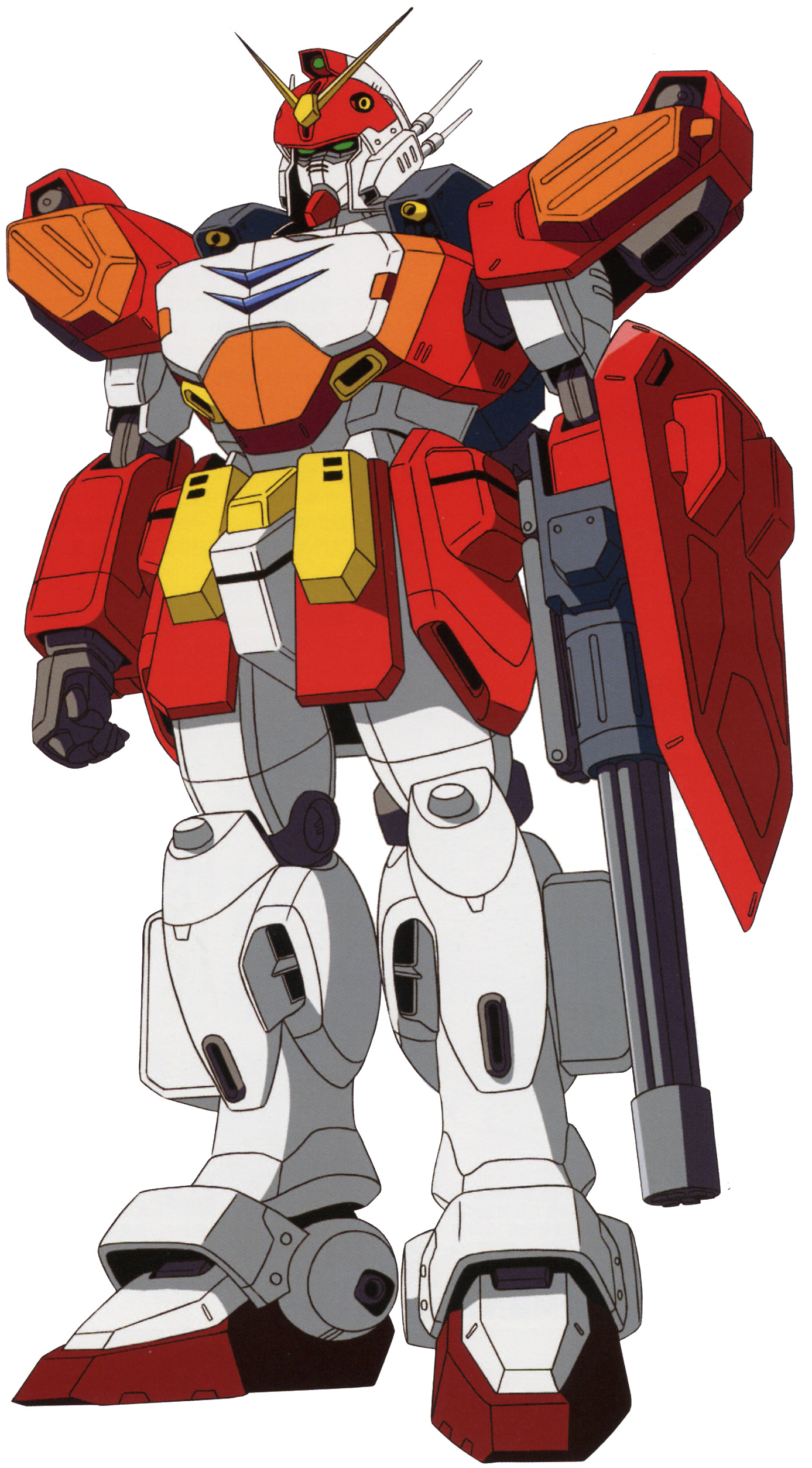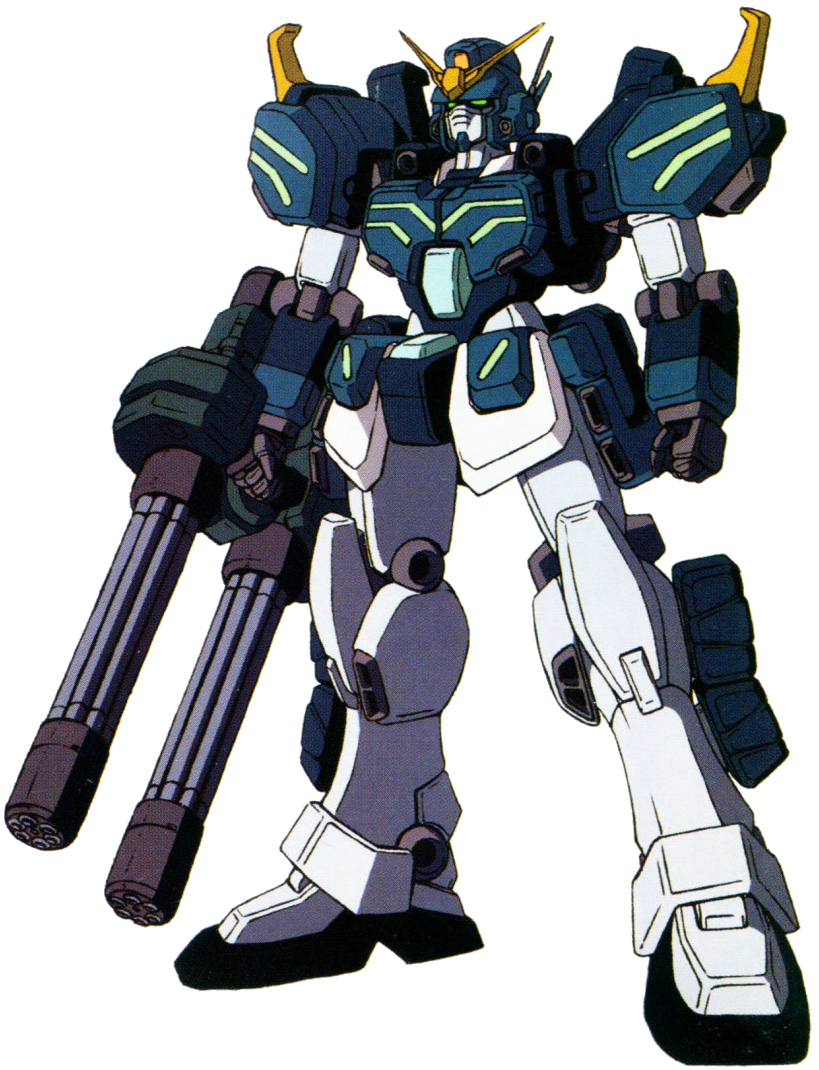

|
#1 Final Fantasy VII
Final Fantasy VII is credited as "the game that sold the PlayStation", as well as allowing console role-playing games to find a place in markets outside Japan, and (as measured in copies sold) remains the most popular title in the series. Final Fantasy VII was both a critical and commercial success, and set several sales records. Within three days of its release in Japan, the game had sold 2.3 million copies. This popularity inspired thousands of retailers in North America to break street dates in September to meet public demand for the title. In the game's debut weekend in North America, it sold 330,000 copies, and had reached sales of 500,000 units in less than three weeks. The momentum built in the game's opening weeks continued for several months; Sony announced the game had sold one million copies on the continent by early December, prompting business analyst Edward Williams from Monness, Crespi, Hardt & Co. to comment, RPG category and expanded the conventional audience with the launch of Final Fantasy VII". Final Fantasy VII has sold over 9.8 million copies worldwide as of December 2005, making it the highest-selling Final Fantasy title. The battle screen is a 3D representation of an area, such as a building's interior or an open grassland, in which the player commands the characters in battles against CPU-controlled enemies. While characters are super deformed on maps, the character models are more realistic and normal-scaled in combat. Final Fantasy VII is the first game in the series to have character models with fully-rendered polygons, rather than 2D sprites. The game uses the same Active Time Battle (ATB) system used in FFIV. The skill system is built around the use of materia; magical orbs that are placed in special slots on weapons and armor, allowing players to customize their characters' access to magic spells, summons, and special abilities. A modified form of Final Fantasy VI's "Desperation Attacks" appears in Final Fantasy VII as the "Limit Break". Unlike materia, each character has their own unique set of Limit Breaks, which are divided into four levels of strength. Final Fantasy VII is definately considered to be the best Final Fantasy game. A must play for any RPG fan.
|


|
#2 Final Fantasy X
Final Fantasy X was well-received by the media, and enjoyed high sales figures. Within four days of its release in Japan, the game had sold over 1.4 million copies in pre-orders. These figures exceeded the performances of Final Fantasy VII and Final Fantasy IX in a comparable period, and Final Fantasy X became the first PlayStation 2 game to reach two million and four million sold copies. In October 2007, the game was listed as the eighth best-selling game for the PlayStation 2. The game has sold 6.6 million copies as of January 2004.Final Fantasy X received the Best Game Award from the CESA GAME AWARDS for 2001-2002. Final Fantasy X came in third on IGN's "Top 25 PS2 Games of All Time" list in 2007. At the sixth annual Interactive Achievement Awards in 2003, it was nominated for "Outstanding Achievement in Animation" and "Console Role-Playing Game of the Year". The advancements in portraying realistic emotions achieved with Final Fantasy X through voice-overs and detailed facial expressions have since become a staple of the series. Traversing real-time 3D environments instead of an overworld map has also become a standard of the series. Final Fantasy X introduces the Conditional Turn-Based Battle (CTB) system in place of the series' traditional Active Time Battle (ATB) system. Limit Breaks, highly damaging special attacks, reappear in Final Fantasy X under the name "Overdrives". In this new incarnation of the feature, most of the techniques are interactive, requiring button inputs to increase their effectiveness. Final Fantasy X introduces an overhaul of the summoning system employed in previous games of the series. Whereas in previous titles a summoned creature would arrive, perform a single action, and then depart, the "aeons" of Final Fantasy X arrive and entirely replace the battle party, fighting in their place until either the enemy has been slain, the aeon itself has been defeated, or the aeon is dismissed by the player. As with previous titles in the series, you can develop and improve their characters by defeating enemies and acquiring items, though the traditional experience point system is replaced by a new system called the "Sphere Grid". Instead of characters gaining pre-determined statistic bonuses for their attributes after leveling up, each character gains a "sphere level" after collecting enough ability points (AP). Sphere levels allow players to move around the Sphere Grid, a predetermined grid of interconnected nodes consisting of various statistic and ability bonuses. Items called "spheres" are applied to these nodes, unlocking its function for the selected character. The Sphere Grid system also allows players to fully customize characters in contrast to their intended battle roles. The new system and improved graphics make this game a must play, and an important game in the series.
|


|
#3 Final Fantasy VIII
Final Fantasy VIII received positive reviews from critics and was commercially successful. Within two days of its North American release on September 9, 1999, Final Fantasy VIII became the top-selling video game in the United States, a position it held for more than three weeks. It grossed a total of more than $50 million in the thirteen weeks to follow, making it the fastest-selling Final Fantasy title. In Japan, it sold roughly 2.5 million units within the first four days of release. More than six million units were sold in total by the end of 1999. As of March 31, 2003, the game had shipped 8.15 million copies worldwide, with 3.7 million of those copies being shipped in Japan and 4.45 million abroad. The opening cut scene in Final Fantasy VIII was ranked second on Game Informer's list of "Top 10 Video Game Openings", and first by IGN. IGN additional named the game's ending the third best of any game for the PlayStation, while UGO.com named it one of the series' best and most memorable moments. Final Fantasy VIII was voted by readers of Japanese magazine Famitsu as the 22nd best game of all time in 2006, and named one of the twenty essential Japanese role-playing games by Gamasutra, stating "[t]here's a lot that Final Fantasy VIII does wrong, but there's even more that it does right". For Final Fantasy VIII, Hiroyuki Ito designed a battle system based on summon-able monsters, called "Guardian Forces", abbreviated in-game as "GF". Assigning ("junctioning") a GF onto a character allows the player to use battle commands beyond Attack with the main weapon, such as Magic, GF (to summon the junctioned GF and have it perform an action), and Item. While previous Final Fantasy titles provided each character with a limited pool of magic points that were consumed by each spell, in Final Fantasy VIII, spells are acquired ("drawn") either from enemies in battle, Draw Points distributed throughout the game's environments, or by refining items and cards. Spells are then stocked on characters as quantified inventory (up to 100 per spell and limited to 32 distinct spells per character) and are consumed one by one when used. Characters can also junction these spells onto their statistics—such as Strength, Vitality, and Luck—for various bonuses, provided the character has junctioned a Guardian Force. The junction system's flexibility affords the player a wide range of customization options.Characters in Final Fantasy VIII have unique special attacks called "Limit Breaks", as in Final Fantasy VII. While the Limit Breaks in Final Fantasy VII are triggered after sufficient damage has been received, in Final Fantasy VIII, the availability of Limit Breaks depends on a character's current health—a Limit Break is more likely to be available to a character with low health. Final Fantasy VIII used an Experience point and level system quite different from previous games in the series. While EXP is awarded after battling and defeating enemies, who are predominantly encountered randomly, and contribute to the continued strengthening and level-gaining of the characters, here the similarity ends. While previous levels required ever-increasing amounts of EXP to surmount, FF8 characters gain a level after accumulating 1000 points. Enemies around the world, furthermore, remain on equal level with the characters, as opposed to most RPGs where enemies from previously-visited locations in the game/plot are weak and easily defeated. The field map consists of controllable 3D characters overlaid on one or more 2D pre-renderedCPU-controlled enemies take place. The interface is menu-driven, as in previous titles, but with the typical weapon and armor systems removed and new features present, such as the Junction system. Also featured is a collectible card-based minigame called "Triple Triad". backgrounds, which represent environmental locations such as towns or forests. The battle screen is a 3D model of a location such as a street or room, where turn-based fights between playable characters and
|


|
#4 Final Fantasy III
Final Fantasy III was thought to be typical of RPGs of its day, with a high degree of difficulty requiring a significant amount of grinding. It was influential in the development of the magic system and job systems of Final Fantasy XI. In 2006, readers of the Japanese gaming magazine Famitsu voted the original Final Fantasy III the eighth-best video game of all-time. As of March 31, 2003, the game had shipped 1.4 million copies in Japan, and is regarded as one of the top-selling games of 1994. The reception for the remake on the Nintendo DS has been mostly positive with high sales and fair reviews from video game critics. IGN notes that "interest in FFIII should come as no surprise given...the popularity of the DS". The game sold 500,000 units within the first week in Japan, beating Square Enix's original prediction that they would only sell 350,000. As of August 6, 2007, the game has sold 990,000 units in Japan and 460,000 units in North America. As of August 8, 2008, it has sold 480,000 units in Europe. Figurines of the characters from the game have been created. Final Fantasy III combines elements of the first two Final Fantasy games with new features. The turn-based combat system remains in place from the first two games, but hit points are now shown above the target following attacks or healing actions, rather than captioned as in the previous two games. Auto-targeting for physical attacks after a friendly or enemy unit is killed is also featured for the first time. Unlike subsequent games in the series, however, magical attacks are not auto-targeted in the same fashion. The experience point system featured in Final Fantasy makes a return following its absence from Final Fantasy II. The character class system featured in the first game in the franchise also reappears, with some modifications. Whereas in the original game the player chooses each character's class alignment at the start of the game, Final Fantasy III introduces the "job system" for which the series would later become famous. Final Fantasy III is the first game in the series to feature special battle commands such as "Steal" or "Jump", each of which is associated with a particular job ("Steal" is the Thief's specialty, while "Jump" is the Dragoon's forte). Certain jobs also feature innate, non-battle abilities, such as the Thief's ability to open passages that would otherwise require a special key item. It is also the first game in the series to feature summoned creatures which are called with the "Summon" skill. Final Fantasy III for the Nintendo DS features overhauls to the job system, including the rebalancing of the classes, the addition of new abilities, new events, a new crystal and dungeon, and the removal of capacity points. Unlike the original Famicom version, most of the jobs remain useful for the entire game. Also new are special job-specific items available only if a character has fully mastered a certain job. In place of capacity points, each character incurs a small temporary penalty for switching jobs. This penalty decreases the character's statistics for the next 0 to 10 battles. This period is called a "Job Transition Phase" and its length is based on how similar the new job is to the old job, and how proficient the character already is at the new job.
|

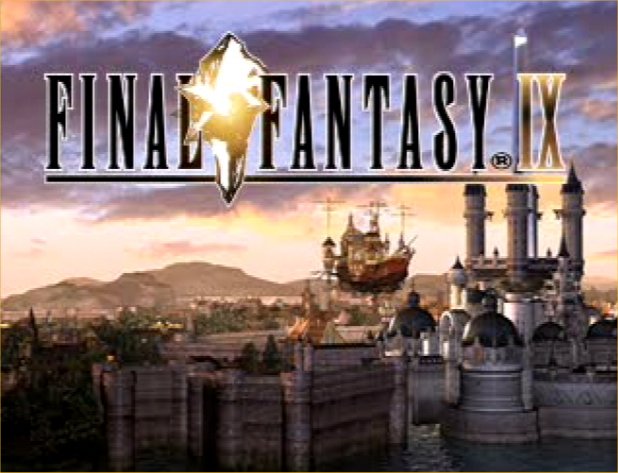
|
#5 Final Fantasy IX
Final Fantasy IX did not sell as well as Final Fantasy VII or Final Fantasy VIII in either Japan or the United States. As of March 31, 2003, the game had sold 5.30 million copies worldwide. The game was voted the 24th-best game of all time by readers of the Japanese magazine Famitsu and 42nd by the users of the website GameFAQs. Final Fantasy IX offers a new approach to town exploration with Active Time Events (ATE), which provide character development, special items, and prompts for key story-altering decisions. At specific points, the player may view events that are occurring simultaneously. ATE is occasionally used to simultaneously control two teams when the party is divided to solve puzzles and navigate mazes. Final Fantasy IX deviates from the style of customizable characters featured in the last two titles by reviving the character class concept, which designates a character to a certain role in battle. Reviews for the game were generally positive, with praise to the graphics and nostalgic elements. Critics pointed out that the strength of the game lies on the gameplay, character development, and visual representation. The characters and graphics received positive reviews. Although IGN feels the in-depth character traits in Final Fantasy IX could be generally found in other Final Fantasy games, they are nevertheless engaging and sympathetic.
|


|
#6 Final Fantasy: X-2
Final Fantasy X-2 set several precedents in the Final Fantasy series aside from being the first direct sequel in video game form and the second sequel in the franchise. It was the first game in the series to feature only three playable characters, an all-female main cast, and early access to most of the game's locations. Additionally, it featured a variation of the character classes system—one of the series' classic gameplay concepts—and is one of the few games in the series to feature multiple endings. Though a direct sequel to Final Fantasy X, Final Fantasy X-2 does not duplicate its predecessor's gameplay; instead, it innovates on traditional elements. Like pre-Final Fantasy X installments, characters "level up" after a certain number of battles, by gaining pre-determined statConditional Turn-Based Battle system in bonuses. The Final Fantasy X has been replaced by a faster-paced variation of the Final Fantasy series' traditional Active Time Battle (ATB) system. Whenever a random enemy is encountered, the ATB system is used. Under this enhanced version of the ATB, playable characters may interrupt an enemy while they are preparing to take action, in lieu of waiting for an enemy's turn to finish before attacking. Furthermore, it is possible for both characters and enemies to chain attacks together for greater damage. Another departure from the gameplay of Final Fantasy X is in its world navigation system: players can visit almost every location in Spira from early in the game, transported via the airship Celsius. This is a deviation from the overall Final Fantasy series, where the most efficient means of transportation is typically not obtained until late in the game. Final Fantasy X-2 reintroduces the series' classic character class system through the inclusion of dresspheres. Because the party never grows beyond three characters, switching characters during battle is unnecessary. Instead, the player can switch character classes, providing access to different abilities. The playable characters are allowed to equip one dressphere at a time, each providing different battle functions and abilities. Characters can learn new skills for each dressphere with the use of Ability Points (AP). AP is obtained by defeating enemies and by the use of items and abilities for that sphere. Abilities to be learned are chosen in the main menu. During battle, AP is given to that ability until it is learned. Each character can access as many as six dresspheres at a time, depending on the specific properties of the Garment Grid they are wearing. The Garment Grid is a placard featuring a geometric shape connected by nodes. These nodes are slots that can be filled with dresspheres, allowing characters to change character classes during their turn in battle. Most Garment Grids possess Gates that when passed through grant the user a complimentary buff. As with equipped items, Garment Grids often provide characters with a variety of enhancements and extra abilities. The game features diverse Garment Grids and dresspheres which can be discovered as the game progresses. While normal dresspheres can be used by all three playable characters, each character can acquire a dressphere that only they can use. These dresspheres can only be activated after a character has changed into all of the classes designated to her Garment Grid in a single battle. When a character activates one of these dresspheres, the other characters are replaced by two controllable support units. Within nine months of its Japanese release, Final Fantasy X-2 sold a million copies in North America, and nearly four million copies worldwide. It was voted as the 32nd best game of all time by readers of the Japanese video game magazine Famitsu, which also gave it a 34 out of 40. The English release of Final Fantasy X-2 won the Seventh Annual Academy of Interactive Arts & Sciences award in 2004 for "Outstanding Achievement in Character Performance" in recognition of the character Rikku.
|


|
#7 Final Fantasy VII: Crisis Core
Crisis Core is a game the PlayStation Portable. The game is a prequel to Final Fantasy VII and is also the sixth installment in the Compilation of Final Fantasy VII. the player controls the main character Zack through the game's storyline. During the main story of the game, the player moves Zack through and between open areas, allowing him to talk with non-playable characters, interact with the environment, or encounter monsters in battle. At any save point in these areas, the player may opt to take one of many side missions that are available; if selected, Zack is moved to a special area to complete the mission, usually to defeat one or more monsters. If the mission is successfully completed, the player is rewarded with one or more items, and often one or more new missions become available. Whether the mission is completed successfully or if Zack falls in battle, Zack is returned to the save point at the end. If Zack should fall in battle during the main story combat, the player will be forced to restart from their last saved game.Crisis Core uses a real-time combat system in which the player can move Zack around, initiate attacks, special abilities, spells, or item use, and have Zack block or dodge an attack. Zack's abilities in battle are set by what materia that he is equipped with. Up to six materia can be equipped, and can impart special attacks, magic spells, or passive bonuses. Materia can be fused together to make more powerful versions with improved bonuse. Crisis Core uses a slot machine-like mechanic to affect the combat system. The "Digital Mind Wave" (DMW) features two sets of three spinning wheels; one set with numbers one through seven, and another with pictures of characters that Zack befriends during the game. The DMW automatically spins as long as Zack has at least 10 Soldier Points; Soldier Points are awarded to the player by defeating foes. If the DMW stops with the same three pictures lined up, Zack will then perform an appropriate Limit Break attack or ability that can greatly harm an enemy or significantly heal Zack. Additionally, in this case, if the number slots give two or more of the same number, the materia in that slot will power up. Should the numbers line up as "777", Zack will gain an experience level, increasing his health, soldier points, and ability points in combat. Crisis Core sold 350,000 copies in Japan on its release date, including the 77,777 Limited Edition PSP/Crisis Core bundles. Square Enix recently announced that Crisis Core was its best-selling game across all regions from April through September with 710,000 copies sold in Japan. In March 2008, Crisis Core sold 301,600 copies upon its first month of release in the United States, making Crisis Core the second best-selling game for the PSP during the month of March and the sixth best-selling game overall. As of March 31, 2009, Square Enix announced that Crisis Core had sold 2,100,000 units worldwide, with 830,000 of those sales coming from Japan. About 840,000 units of the game, including 550,000 in Europe, were sold during Square Enix's 2009 fiscal year. Crisis Core has received generally positive reviews. With individual scores of 9/9/8/9, the game received an overall rating of 35/40 points from Japanese gaming magazine Famitsu. GameSpot gave the game a score of 9/10, praising its plot, as well as its overall presentation. Because of this, the game was credited as an "Editor's Choice". IGN gave it 8.5/10, citing its great overall presentation and story. It also received a place amongst the "Editor's Choice" gallery of recommended games for the PSP platform. On Metacritic, it has an average score of 83/100. It was rated 9.0/10 by GameSpot saying it's one of the best games for the PSP. It was also nominated by GameSpot for the "Best of 2008" awards, in "Best Story", "Best RPG Game" and "Best PSP Game" categories; it won "Best PSP Game of 2008".
|


|
#8 Final Fantasy XII
Final Fantasy XII sold more than 1,764,000 copies in its first week in Japan. The total number of copies sold stood over 2,150,000 after five weeks of release. A Square Enix conference report stated that Final Fantasy XII sold more than 2.38 million copies in Japan in the two weeks since its March 16, 2006 release, In North America, Final Fantasy XII shipped approximately 1.5 million copies in its first week. As of March 2007, the game has shipped over 5.2 million copies worldwide. It is the fourth best-selling PlayStation 2 game of 2006 worldwide. the player directly controls the on screen character from a third-person perspective to interact with people, objects, and enemies. Unlike previous games in the series, the player can also control the camera with the right analog stick, allowing for a 360° view of the surroundings. While in towns and cities, the player may only see from the perspective of Vaan, although any character may be controlled in battle. The world of Final Fantasy XII is rendered to scale relative to the characters in it; instead of a caricature of the character roaming around miniature terrain, as found in the earlier Final Fantasy games, every area is represented proportionally. The player navigates the world by foot, by Chocobo, or by airship. Players may save their game to a memory card using save crystals or gate crystals, and may use the latter to teleport to other gate crystals. An in-game bestiary provides incidental information about the world of Final Fantasy XII. Final Fantasy XII restructures the system of earning gil, the currency of the Final Fantasy games. Instead of gil, most enemies drop "loot" which can be sold at shops. This ties into a new battle mechanic which rewards the player with improved loot for slaying a particular type of monster multiple times in a row. Selling different types of loot also unlocks a bazaar option in shops, which provides items at a lower cost, or items exclusive to the Bazaar. Battles in Final Fantasy XII occur in the open field; however, menus are still used to issue commands to the characters. Combat unfolds in real time, using a new system called "Active Dimension Battle" (ADB), which allows the player to battle in the overworld instead of in a separate battle screen. The player may issue commands to any of the three characters in the battle party at will; however, certain "guest" characters are controlled by the game's AI. Battle commands include Attack, Magicks & Technicks, Mist, Gambits, and Items. Using these abilities, the player must destroy enemies before being defeated. "Random encounters" have been eliminated in Final Fantasy XII; the transition to a separate battle screen like in other Final Fantasy titles is absent. Instead, enemies are visible in the overworld before an engagement and the player may choose to fight or avoid them in open combat. nother new feature in Final Fantasy XII is the "gambit" system, which allows the player to program each character to perform certain commands in battle in response to specified conditions. Final Fantasy XII introduces "Quickenings", a new Limit Break system unique compared to those in previous games in the series. Characters learn Quickenings by progressing to specific panels on the License Board. The License Board is an array of panels that contain "licenses"—permits which allow a character to perform certain actions. The board is split into two parts; the upper part contains Magick, Technick, Accessory, and Augment (stat increases and other permanent buffs) licenses, and the bottom part is filled mostly with Weapon and Armor licenses. As in many role-playing games, characters level up each time they earn a set number of experience points from defeating enemies; each "level" gained increases the character's statistics, thus improving their performance in battle. The game was critically acclaimed by many reviewers outside of Japan even before its release in those territories. It was praised for its seamless transitions between full motion video segments and the in-game engine, and was voted number one for Best Art Style on IGN's weekly Top Ten. Newtype USA named Final Fantasy XII its "Game of the Month" for November 2006, praised the gameplay, graphics, and story, and called it "the best RPG to have been released for any Sony platform".
|
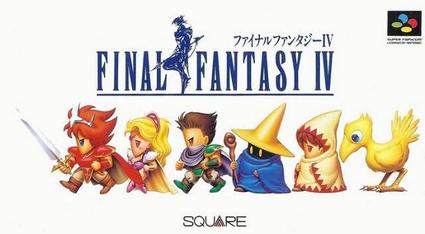

|
#9 Final Fantasy IV
In Japan, nearly 1.5 million copies of Final Fantasy IV's Super Famicom version were sold. As of 2006, nearly 3 million copies of the game (including original and PlayStation re-releases) have been sold around the world. Final Fantasy IV, the player controls a large cast of characters and completes quests to advance the story. Characters move and interact with people and enemies on a field map, which may represent a variety of settings, such as towers, caves, and forests. Travel between areas occurs on a world map. The player can use towns to replenish strength, buy equipment, and discover clues about their next destination. Conversely, the player fights monsters at random intervals on the world map and in dungeons. In battle, the player has the option to fight, use magic or an item, retreat, change character positions, parry, or pause. Certain characters have special options. The game was the first in the series to allow the player to control up to five characters in your party; previous games had limited the party to four. Player characters and monsters have hit points (HP), with the characters' HP captioned below the main battle screen. He game's story is linear—the player can usually advance the game through only one path, although limited side quests are available. Final Fantasy IV introduced Square's Active Time Battle (ATB) system, which differed from the turn-based designs of previous RPGs. The ATB system centers on the player inputting orders for the characters in real time during battles. An important precedent, ATB was used in many subsequent Square games. Each character always is balanced through certain strengths and weaknesses; for instance, a strong magic user may have low defense, while a physical fighter may have low agility. Like other Final Fantasy games, characters gain new, more powerful abilities with battle experience. Major reviewers have called Final Fantasy IV one of the greatest video games of all time, noting that it pioneered many now common console role-playing game features, including "the whole concept of dramatic storytelling in an RPG." Reviewers have praised the game for its graphics, gameplay and score. Reviewers have noted that Final Fantasy IV was one of the first role-playing games to feature a complex, involving plot. Nintendo Power proclaimed it set a "new standard of excellence" for role-playing games. It would later place ninth and twenty-eighth in the "100 Greatest Nintendo Games" lists of issues 100 and 200, respectively. In addition, the magazine GamePro rated it a perfect 5 out of 5 score in its March 1992 issue. In 2005 IGN ranked it as twenty-sixth on its list of greatest games of all time; it is the highest rated Final Fantasy title on the list, but in 2007, the game was ranked #55, behind Final Fantasy VI and Final Fantasy Tactics. Famitsu released a reader poll in 2006 ranking it as the sixth best game ever made.
|


|
#10 Final Fantasy VI
Final Fantasy VI received positive reviews from critics and was commercially successful. As of March 31, 2003, the game had shipped 3.48 million copies worldwide, with 2.62 million of those copies being shipped in Japan and 860,000 abroad. Like previous Final Fantasy installments, Final Fantasy VI consists of four basic modes of gameplay: an overworld map, town and dungeon field maps, a battle screen, and a menu screen. The overworld map is a scaled-down version of the game's fictional world, which the player uses to direct characters to various locations. As with most games in the series, the three primary means of travel across the overworld are by foot, chocobo, and airship. With a few plot-driven exceptions, enemies are randomly encountered on field maps and on the overworld when traveling by foot. The menu screen is where the player makes such decisions as which characters will be in the traveling party, which equipment they wield, the magic they learn, and the configuration of the gameplay. It is also used to track experience points and levels. The game's plot develops as the player progresses through towns and dungeons. Town citizens will offer helpful information and some residents own item or equipment shops. Later in the game, visiting certain towns will activate side-quests. Dungeons appear as a variety of areas, including caves, sewers, forests, and buildings. These dungeons often have treasure chests containing rare items that are not available in most stores. Some dungeons feature puzzles and mazes, which require the player to divide the characters into multiple parties. Combat in Final Fantasy VI is menu-based, in which the player selects an action from a list of such options as Fight, Magic, and Item. A maximum of four characters may be used in battles, which uses the series' traditional Active Time Battle system, or ATB. Under this system, each character has an action bar that replenishes itself at a rate dependent on their speed statistic. When a character's action bar is filled, the player may assign an action. Characters in Final Fantasy VI can be equipped with a wide variety of weapons, armor and accessories (known as "Relics") to increase their statistics and obtain special abilities. Most of this equipment can be used by several different characters, and each character may equip up to two Relics. Relics have a variety of uses and effects, some of which alter basic battle commands, allow characters to use multiple weapons, provide permanent status changes during battle or use protective magical spells in response to being near death. The game garnered rave reviews upon it's original release. GamePro rated it as 5 out of 5, stating that "Characters, plotlines, and multiple-choice scenarios all combine to form one fantastic game!" Electronic Gaming Monthly granted a 9 out of 10 and named it game of the month, commenting that "RPGs with this much depth and realism come once in a blue moon". It won several awards from Electronic Gaming Monthly in their 1994 video game awards, including Best Music for a Cartridge-Based Game, Best Role-Playing Game, and Best Japanese Role-Playing Game. Additionally, they later ranked the game ninth in their 1997 list of the 100 greatest console games of all timeNintendo Power declared the game "the RPG hit of the decade", noting its improved sound and graphics over its predecessors, and the game's broadened thematic scope. Final Fantasy VI was ported to the Sony PlayStation by TOSE and re-released by Square in Japan and North America during 1999. Final Fantasy VI was ported a second time by TOSE and re-released as Final Fantasy VI Advance by Square Enix in Japan on November 30, 2006, by Nintendo in North America on February 5, 2007 and in Europe on June 29, 2007.
|


|
#11 Final Fantasy I
Final Fantasy has been well-received by critics and commercially successful; the original release sold 400,000 copies. As of March 31, 2003, the game, including all re-releases at the time, had shipped 1.99 million copies worldwide, with 1.21 million of those copies being shipped in Japan and 780,000 abroad. As of November 19, 2007, the PlayStation Portable version has shipped 140,000 copies. Final Fantasy has four basic modes of gameplay: an overworld map, town and dungeon maps, a battle screen, and a menu screen. The overworld map is a scaled-down version of the game's fictional world, which the player uses to direct characters to various locations. The primary means of travel across the overworld is by foot, but a canoe, a ship, and an airship become available as the player progresses. With the exception of some battles in preset locations or with bosses, enemies are randomly encountered on field maps and on the overworld map when traveling by foot, canoe, or ship, and must either be fought or fled from. The player begins the game by choosing four characters to form a party, which lasts for the duration of the game.The game's plot develops as the player progresses through towns and dungeons. ombat in Final Fantasy is menu-based: the player selects an action from a list of options such as Fight, Magic, and Item. Battles are turn-based and continue until either side flees or is defeated. If the player's party wins, each character gains experience and gold; if it flees, it is returned to the map screen; and if each character in the party dies, the game is over. Each character has an "occupation", or character class, with different attributes and abilities that are either innate or can be acquired. Final Fantasy was one of the most influential early console role-playing games, and played a major role in legitimizing and popularizing the genre. According to IGN's Matt Casamassina, Final Fantasy's storyline had a deeper and more engaging story than the original Dragon Quest (known as Dragon Warrior in North America). Many modern critics have pointed out that the game is poorly paced by contemporary standards, and involves much more time wandering in search of random battle encounters to raise their experience levels and money than it does exploring and solving puzzles. Other reviewers find the level-building and exploration portions of the game as the most amusing ones.Final Fantasy appeared in the Japanese magazine Famitsu's Top 100 games list, where readers voted it the 63rd best game of all time. GameFAQs users made a similar list in 2005, which ranked Final Fantasy at 76th. It was rated the 49th best game made on a Nintendo system in Nintendo Power's Top 200 Games list.
|
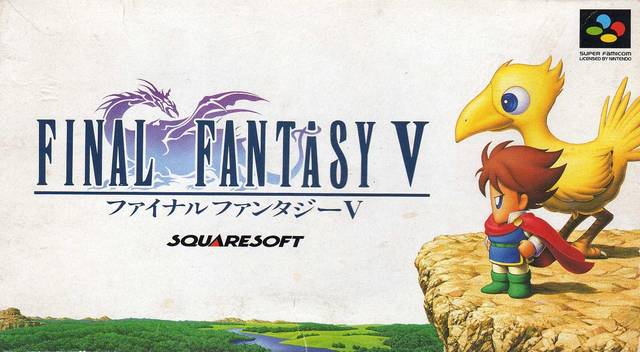

|
#12 Final Fantasy V
Statistics include hit points, the amount of damage a character can receive; strength, the power of the character's physical attacks; and magic, the potency of the character's magical spells. Final Fantasy XII became the sixth game to receive a perfect score from the Japanese gaming magazine Famitsu, making it the first Final Fantasy game and the first PlayStation 2 title to do so. It is also the second Yasumi Matsuno title to garner a perfect score, the first being Vagrant Story. The game was praised for its graphics, scenarios, game system, and the freshness it brought to the Final Fantasy series. For their part, The game is also considered by many as the weakest and most difficult installment of the series. In March 2006, Final Fantasy V has sold 2.45 million units on the Super Famicom, while the Japanese Game Boy Advance version has sold nearly 260,000 copies as of December 2007. Final Fantasy V includes many standard role-playing elements as well as renovated features introduced in earlier Final Fantasy games. Characters grow in strength by gaining experience points from random encounters with monsters on the overworld or in a dungeon. Experience culminates in a "level up" in which party members' attributes, such as hit points or magic power, increase. A menu-based management system allows the player to equip, heal, and change each character's selected job outside of battle as well as to save the game's progress. The player can traverse the overworld by foot, Chocobo, hydra-guided ship, wind drake, or airship depending on the situation. Most towns scattered across the world contain inns for resting, shops for purchasing equipment, and people from whom the player can gain information. The player may also embark on several side quests that become available as the story progresses. Final Fantasy V is the second Final Fantasy game to use the Active Time Battle (ATB) system, in which time flows continuously for both the player and enemies during combat. The main feature of the gameplay of Final Fantasy V is the Job System. Players can choose jobs for their character to learn. This system allows each character to gain special abilities and potentially master up to 22 unique jobs (26 in the Game Boy Advance version). Each character begins with a default "Freelancer" class, and as the player acquires crystal shards, new jobs become available. A separate form of experience—Ability Points (ABP)—is used to improve characters' job levels, while they continue to earn regular experience points. As job levels increase, new skills become available for that character to use in a new form of customization: characters learn job-specific abilities that may be carried over to a new job. In March 2006, Final Fantasy V was ranked as number 15 on Japanese magazine Famitsu's reader list of top 100 video games of all time. While not initially released in North America, the game received mixed reception from import reviews. 1UP.com's staff stated that while the game's story was very weak, the gameplay was "another story", heavily praising the job system and the feature to combine abilities from different job classes, and gave it a score of B-. Allgame's review shared similar sentiments regarding the storyline and job system, adding praise for the addition of hidden events and items for players to search for, giving the game a score of 3.5 out of 5. RPGamer found that the game improved on the visual presentation, menu system, and overall field navigation of Final Fantasy IV, but the "maddeningly high encounter rate", "average sound selection", and "washed out" color palette hurt the game's presentation, giving it a score of 5/10. Final Fantasy V was ported by TOSE to the Sony PlayStation and re-released in Japan on March 19, 1998. Final Fantasy V was ported a second time by TOSE to the Nintendo Game Boy Advance as Final Fantasy V Advance, which was released on October 12, 2006 in Japan, November 6, 2006 in North America, and April 20, 2007 in Europe.
|


|
#13 Final Fantasy II
As of March 31, 2003, Final Fantasy II, including all re-releases at the time, had shipped 1.28 million copies worldwide, with 1.08 million of those copies being shipped in Japan and 200,000 abroad. As of November 19, 2007, the PlayStation Portable version had shipped 90,000 copies in Japan and 70,000 in North America. Despite these high sales, the initial release version of the game has sold the least copies of any out of the the first ten main Final Fantasy series. inal Fantasy II features gameplay similar to that of its predecessor, Final Fantasy. The player can freely roam an overworld containing several towns and dungeons. A menu-based system allows the player to outfit each character with equipment and up to two—often disposable—items for battle. Magic spells are assigned to the character from the item menu, and certain spells, such as "Cure", can be used outside of battle. The player can also save their progress on the overworld. Weapons, armor, items, and magic spells can be purchased at shops, and townspeople provide useful information for the player's progression through the game. One new feature is the "Word Memory" system: when in conversation with NPCs, the player can "ask" about and "memorize" special keywords or phrases, which can later be repeated to other NPCs to gain more information or unlock new actions. Similarly, there exist a handful of special items that can be shown to NPCs during conversation or used on certain objects, which have the same effect. Characters and monsters are no longer separated into separate windows in the battle screen as they were in Final Fantasy I, and players can see their current and total hit points below the battle. Players can also fight with less than four characters in their party, which was not possible in the first game. Final Fantasy II introduced the chocobo, the signature Final Fantasy mascot, which lets characters ride to a location at great speed without being attacked by enemies. Unlike the original Final Fantasy, players could not upgrade their characters' classes. The game is also one of the few games in the series to not use experience-based levels. Instead, each character participating in battle develops depending on what actions they take. inal Fantasy II uses the same turn-based battle system seen in the original Final Fantasy, with battle parties consisting of up to four characters at a time. The game introduces a "back row" in battle, within which characters or enemies are immune to most physical attacks, but can be harmed with bows and magical attacks.The original release of the game was reviewed in 1993 in Dragon #199 by Sandy Petersen in the "Eye of the Monitor" column. Petersen gave the game 4 out of 5 stars, praising the difficulty and length of the game. He also applauded the story, which he compared favorably to those of novels and movies rather than the simplistic plots found in many contemporary video games; this led him to become "more attached to my party in Final Fantasy II than in any other computer game I’ve played" The PSP version met average reviews. GameSpot called the level up system "chaotic" and noted that unlike previous versions, this was shipped without a version of Final Fantasy I. IGN also complained about the gameplay, saying, "If you're the type of player who puts a higher emphasis on more satisfying gameplay experiences, however, then FF2 definitely isn't the upgrade it appears to be." Both sources praised the graphics, however. GameSpy, however, while echoing similar complaints about the "quirky and sometimes confusing" leveling system and praises for the graphics, also applauded the supposed decrease in difficulty of the game, which in the reviewers opinion eliminated the necessity to abuse the leveling system in order to progress in the game as the player did in the original game. Final Fantasy II was again released in a new format in 2004 for the Game Boy Advance as part of Final Fantasy I & II: Dawn of Souls. To celebrate the Final Fantasy series' 20th anniversary, the game was released in Japan for the PlayStation Portable in 2007. The remake features improved graphics, the cutscenes and soundtrack from Final Fantasy Origins, and the bonus quest and dungeons from Final Fantasy I & II: Dawn of Souls. It additionally includes two new dungeons in which more character-specific equipment can be found, alongside powerful enemies and a new boss.The release for the Japanese Wii Virtual Console on June 16, 2009 is the most recent release; this version is identical to the original NES release, incorporating none of the updates of the later versions.
|


|
#14 Final Fantasy XI
Final Fantasy XI Online, is a MMORPG. It was released in Japan on Sony's PlayStation 2 on May 16, 2002, and was released for PC in November 2002. The PC version was released in North America on October 28, 2003, and the PlayStation 2 version on March 23, 2004. An Xbox 360 version was released worldwide in April 2006 for all regions, as the system's first MMORPG and the first cross-platform MMORPG. Final Fantasy XI, in addition to being an MMORPG, differs from previous titles in the series in several ways. Unlike the predefined main characters of previous Final Fantasy titles, players are able to customize their characters in limited ways, including race, gender, face, hair color, body size, job, and allegiance. Also diverging from previous games in the series, all battles are real time, and enemies are no longer randomly encountered, a trend continued in FFXII.There are 32 public game worlds, a cluster of servers, available for play with approximately 15,000 to 20,000 players in each. The servers are named after summoned monsters from previous Final Fantasy titles, such as Ifrit and Diabolos. Players have the ability to move between servers, though Square-Enix charges a "world transfer" fee to do so. There are no region-specific or system-specific servers, and unlike most online games, players of different languages play in the same world and can interact through automatic language translation from a library of translated phrases. The game servers are run by Square-Enix as part of their PlayOnline network. Players have the option of using any combination of a keyboard, mouse, and controller to play Final Fantasy XI. The heads-up display in Final Fantasy XI consists of a log window, menus, and several game information elements. The log window at the bottom of the screen displays system messages, battle messages, and text input by other players. Players may choose to filter what appears in the log window. "Menus" allow the player to access different commands, status windows, and configuration options. The "action command menu" appears just above the log window and gives the player several options to interact with the game world. Several menu options are available through the use of keyboard shortcuts, as well. Square Enix also allows players to communicate by text messaging with people playing the game online. Gameplay in Final Fantasy XI consists of two major components: missions, through which the main storyline of the game is told, and quests, which do not advance the main storyline, but fill out the game's fantasy world. Battles in Final Fantasy XI take place in the same world in which players move around, unlike previous Final Fantasy games in which a battle would take place in a new screen. Unlike many MMORPGs, there is no way to attack other players. Final Fantasy XI's job system is largely adapted from Final Fantasy III. Each job has unique abilities, which must be activated by the player in order to come into effect, last a limited time, and have a "cooldown" period before they can be used again; traits, which are passive abilities that are always in effect; and a special "2-hour" ability that performs some extraordinary function and has an extraordinary 2-hour-long cooldown period to go with it. In addition to completing quests and missions, players can participate in several side-minigames and other activities. The user base for the PlayStation 2 version was truncated initially because of limited sales of the PlayStation 2's hard drive and network adapters that were needed for the game. The Japanese release of Rise of the Zilart was the number one selling game when it debuted with 90,000 copies sold in the first week. The Final Fantasy XI All-in-One Pack was number 36 and Wings of the Goddess was number 40 on the top 50 best-selling Xbox 360 games in Japan as of December 2007. For the April–September 2004 financial period, Square Enix saw online gaming, particularly Final Fantasy XI, sales increase by 101 percent and operating profit increase by 230.9 percent. Revenues held steady from subscription services in the summer of 2006; in the fall, however, Square acknowledged that online subscription revenues were "unsatisfactory", despite the steady performance of Final Fantasy XI. In December 2002, Square Enix president Yoichi Wada announced that there were over 200,000 subscribers to Final Fantasy XI, allowing the company to break even and start making a profit. There were between 200,000 and 300,000 active players daily in 2006. As of August 14, 2006 the Xbox 360 version was the sixth most played game on Xbox Live. Famitsu rated Final Fantasy XI 38 out of 40. Computer and Video Games Magazine noted that it was one of the most welcoming MMORPG's despite the cumbersome initial registration and setup. Final Fantasy XI was awarded the grand prize from the Japan's Consumer Entertainment Software Association (CESA) for 2002–2003 along with Taiko no Tatsujin. It has also received GameSpy's 2003 PC MMORPG Game of the Year Award and IGN's Game of the Month for March 2004, citing the game's huge customization and its successful cross-platform and cross-language game world.
|



